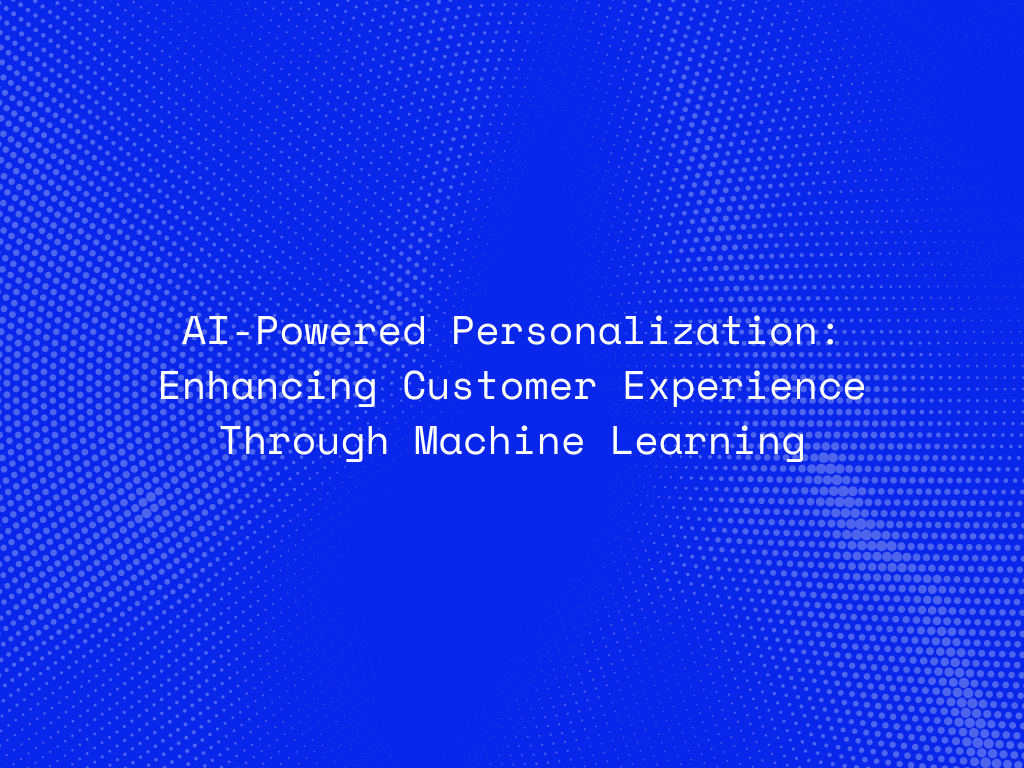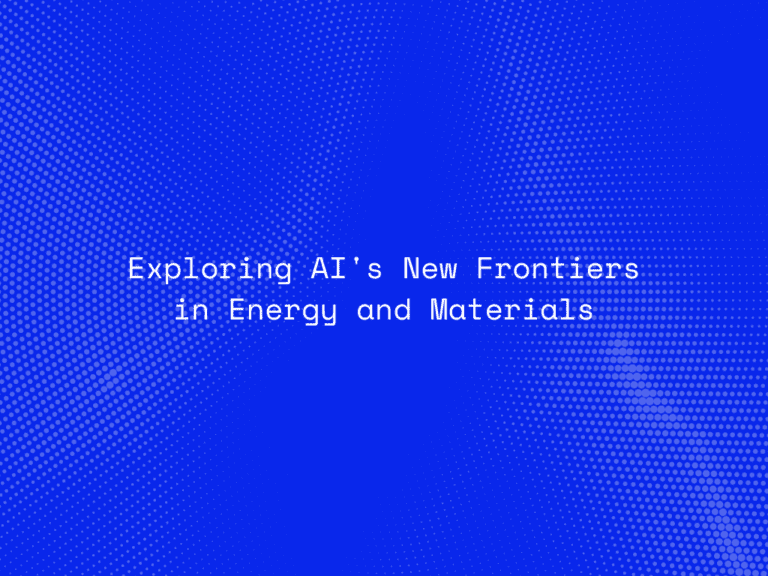In today’s hyper-connected world, customers expect personalized experiences tailored to their preferences and behaviors. AI-powered personalization, driven by machine learning (ML), is revolutionizing how businesses interact with consumers, delivering more relevant recommendations, targeted content, and optimized customer journeys. This blog will explore how machine learning is enhancing customer experience through AI-powered personalization and why this is crucial for businesses looking to stay competitive.
1. Understanding AI-Powered Personalization
a) What is AI-Powered Personalization?
AI-powered personalization uses data analysis and machine learning algorithms to create individualized experiences for users. By analyzing customer behavior, preferences, and interactions, AI can recommend products, content, or services that align with each user’s unique needs.
- Dynamic Adaptation: AI systems constantly learn from user behavior, making real-time adjustments to recommendations and content delivery. This ensures that the customer experience remains relevant and up-to-date.
b) The Role of Machine Learning in Personalization
Machine learning is the backbone of AI-powered personalization. It allows systems to automatically detect patterns in data and make predictions without being explicitly programmed. As customers interact with a platform, ML algorithms analyze their behavior and generate personalized recommendations that enhance engagement and satisfaction.
-
Predictive Analytics: ML models predict customer preferences and behaviors by analyzing historical data. This enables companies to deliver personalized offers, content, and experiences based on anticipated needs.
-
Behavioral Segmentation: ML algorithms can segment customers into groups based on behavior, allowing businesses to target specific user segments with tailored messaging.
Connect With Us
2. AI-Driven Personalization Strategies
a) Personalized Product Recommendations
One of the most common applications of AI-powered personalization is product recommendations. E-commerce giants like Amazon and Netflix have popularized recommendation engines that suggest products, movies, or TV shows based on a user’s previous interactions and preferences.
-
Collaborative Filtering: This technique analyzes the behavior of similar users to recommend items. If users with similar interests purchased a product, it might be recommended to others in the same group.
-
Content-Based Filtering: This technique analyzes the features of products that a user has liked in the past to recommend similar items. For instance, if a customer frequently buys mystery novels, they are likely to receive suggestions for new books in the same genre.
b) Personalized Content Delivery
Personalization extends beyond products—it also applies to content. Machine learning algorithms help businesses deliver content tailored to the interests of individual users.
-
Dynamic Content Creation: ML systems can generate personalized blog posts, news articles, and marketing emails based on a user’s browsing history and preferences.
-
Content Recommendation: Platforms like YouTube and Spotify use AI to recommend videos or music based on user listening or viewing habits, making content discovery more seamless.
c) Optimizing Customer Journeys
AI-driven personalization also optimizes customer journeys by customizing every touchpoint, from product discovery to checkout.
-
Real-Time Personalization: AI tools can track a user’s real-time behavior and adjust the website or app interface accordingly. For example, an e-commerce site may show personalized deals and offers based on the user’s browsing history or abandoned cart items.
-
Automated Customer Support: AI chatbots use natural language processing (NLP) and machine learning to provide personalized responses to customer queries, enhancing the user experience by offering quick and relevant solutions.
3. Enhancing Customer Experience with AI Personalization
a) Improving Engagement and Loyalty
Personalized experiences lead to greater customer satisfaction, which in turn drives engagement and loyalty. Customers are more likely to return to a brand that understands and caters to their specific needs.
-
Customer Retention: By delivering relevant recommendations and tailored experiences, businesses can increase customer retention rates. Loyal customers are more likely to make repeat purchases and recommend the brand to others.
-
Building Trust: AI-powered personalization builds trust by showing that the brand understands and respects individual preferences, creating a more meaningful connection between the customer and the business.
b) Driving Conversions with Tailored Experiences
AI-powered personalization has a direct impact on conversions. When customers receive relevant product recommendations or targeted content, they are more likely to make a purchase.
-
Personalized Discounts and Offers: Machine learning algorithms analyze customer behavior to offer personalized discounts at the optimal time. For example, AI can detect when a user is hesitating at checkout and present a discount code to encourage conversion.
-
Cart Abandonment Solutions: AI systems track cart abandonment behavior and trigger personalized emails or notifications that remind customers of items left behind, often with special offers to prompt a purchase.
c) Omnichannel Personalization
Today’s customers interact with brands across multiple channels—websites, social media, email, and physical stores. AI-powered personalization ensures that users receive a consistent, personalized experience across all these touchpoints.
-
Cross-Channel Recommendations: AI tools can track user behavior across channels and provide personalized recommendations, whether the customer is shopping online or visiting a physical store.
-
Seamless Experience: AI ensures that customers can transition seamlessly from one channel to another without losing the personalized touch. For example, if a customer adds an item to their cart on a mobile app, they will see the same item in their cart when they log in on the desktop version.
Connect With Us
4. AI Personalization in Different Industries
a) Retail and E-commerce
The retail industry is a frontrunner in leveraging AI-powered personalization to improve the customer experience. Personalized product recommendations, targeted ads, and tailored shopping experiences have become essential tools for retailers.
-
Virtual Shopping Assistants: AI-driven virtual assistants can provide personalized recommendations and assist customers in finding products, making the shopping experience more convenient.
-
Personalized Marketing Campaigns: Retailers use AI to segment customers and send targeted marketing campaigns, offering personalized deals based on purchase history and browsing behavior.
b) Media and Entertainment
In the media and entertainment industry, AI-powered personalization enhances content discovery by recommending TV shows, music, and articles that align with individual preferences.
-
Streaming Platforms: Platforms like Netflix, Hulu, and Spotify use AI to create personalized playlists, video recommendations, and discover new content based on user interests.
-
News Aggregators: AI-powered news platforms tailor content to readers, suggesting articles based on past reading behavior and preferences.
c) Banking and Finance
In the financial sector, AI personalization helps provide customized financial products, recommendations, and advice based on customer needs and spending habits.
-
Personalized Investment Advice: AI-powered robo-advisors offer tailored investment strategies based on a user’s financial goals, risk tolerance, and spending habits.
-
Custom Loan Offers: Financial institutions use AI to analyze customer data and provide personalized loan or credit offers that align with individual financial profiles.
5. Challenges and Considerations
a) Data Privacy and Ethical Concerns
While AI-powered personalization offers immense benefits, it raises concerns about data privacy. Companies must ensure they are transparent about how customer data is collected and used.
-
Data Protection Regulations: Organizations must comply with data privacy regulations such as GDPR and CCPA to protect customer information and avoid misuse.
-
Ethical AI Use: Personalization should be implemented in a way that respects customer privacy and autonomy, ensuring that AI is used responsibly to avoid manipulation or exploitation.
b) Over-Personalization Risk
While personalization enhances user experiences, over-personalization can lead to a loss of spontaneity and limit discovery. Brands must strike a balance to avoid overwhelming users with hyper-targeted content.
- Maintaining Variety: Providing a mix of personalized and exploratory content helps keep the experience fresh and engaging for users, preventing content fatigue.
Conclusion
AI-powered personalization is transforming customer experience across industries, enabling businesses to deliver relevant, tailored interactions that boost engagement, loyalty, and conversions. As machine learning technologies continue to evolve, companies that embrace AI personalization will stay ahead of the curve, creating seamless, meaningful experiences for their customers. However, it is crucial for organizations to balance personalization with ethical data practices and ensure that customer privacy is respected. With the right approach, AI-driven personalization can become a powerful tool for enhancing customer satisfaction and driving business success.




